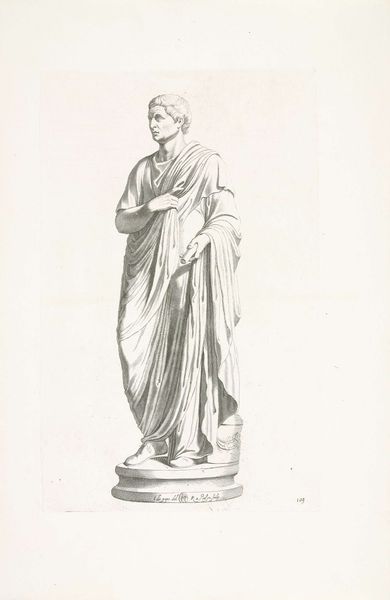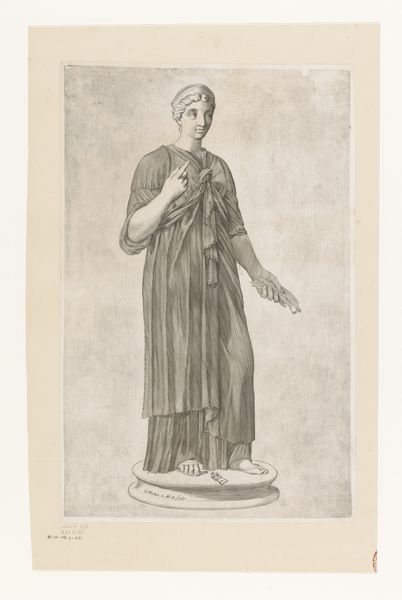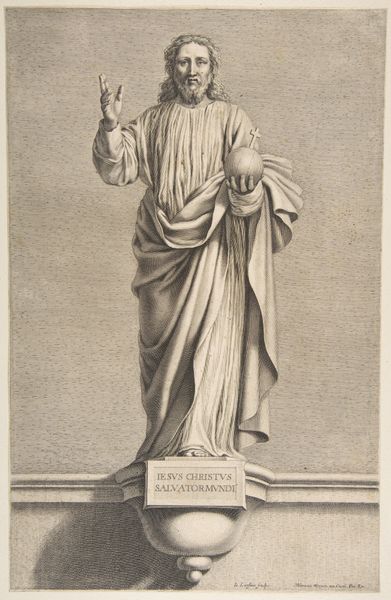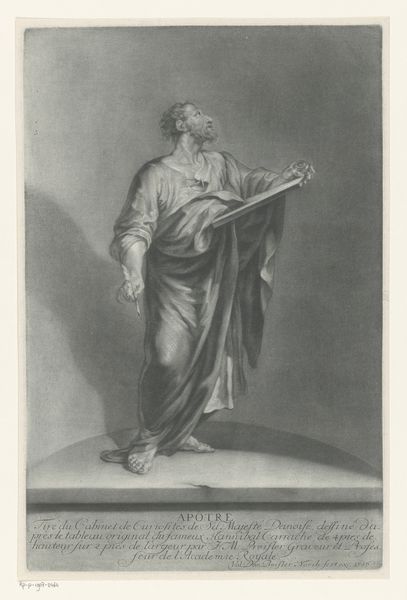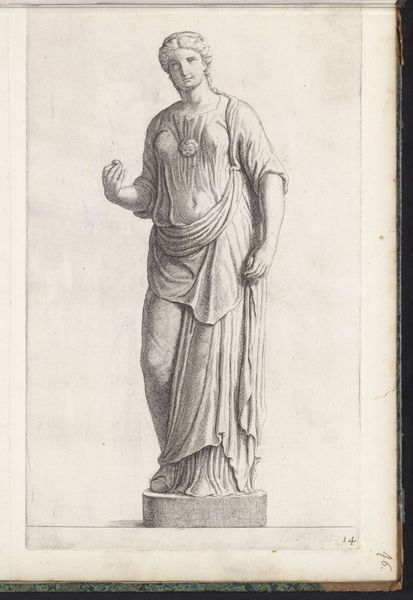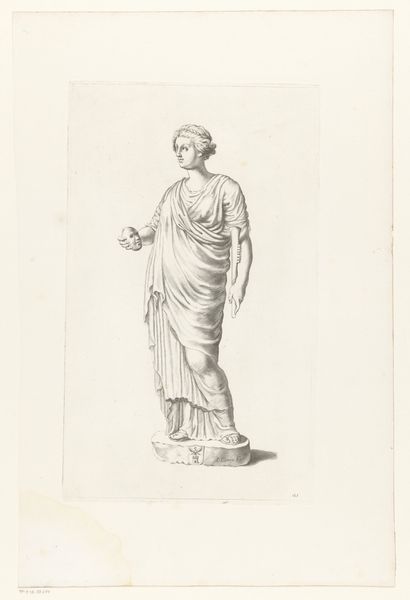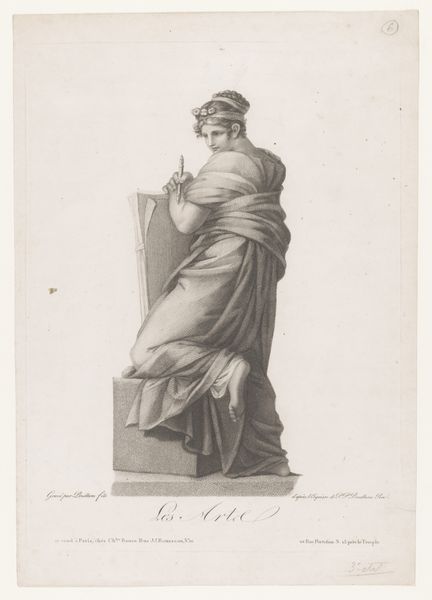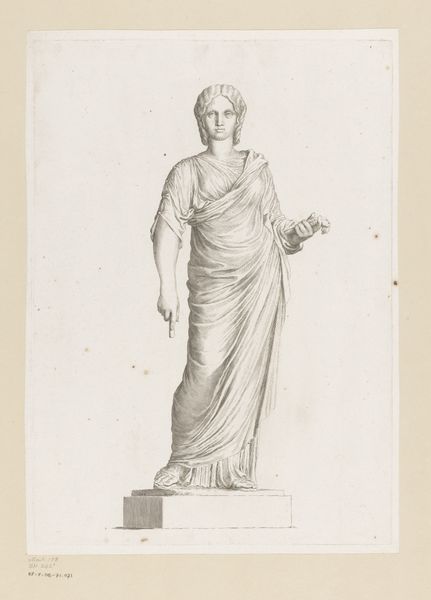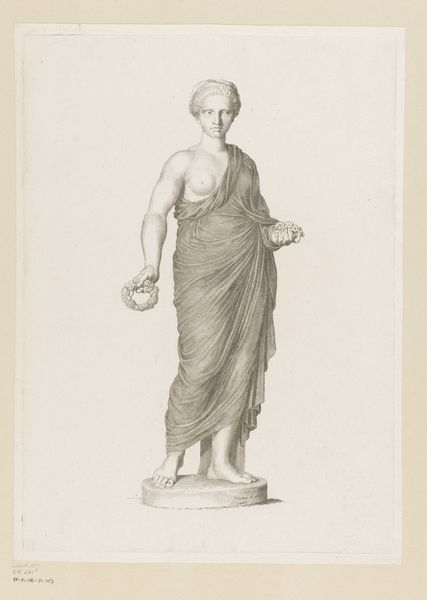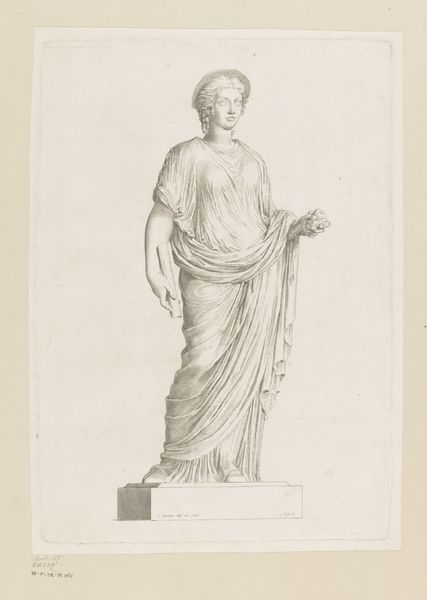
print, engraving
#
portrait
#
baroque
# print
#
greek-and-roman-art
#
history-painting
#
academic-art
#
engraving
Dimensions: height 392 mm, width 278 mm
Copyright: Rijks Museum: Open Domain
Curator: Before us, we have "Antiek standbeeld van een Romeins senator", a print made in 1677 by Etienne Baudet. What's your initial reaction to this depiction of a Roman senator, circa the late 17th century? Editor: Well, my first thought is that it feels so… contained. The way the light models the statue, giving the stone almost a fabric-like appearance. All that drapery feels simultaneously weighty and fluid. What was Baudet hoping to convey? Curator: It seems Baudet intended to capture a specific classical sculpture. I would say it goes beyond mere documentation, acting more like an interpretation. You see, through the precise lines of engraving, the very materiality of the imagined senator shifts from hard marble to a rather pleasing aesthetic object, for consumption, no? Editor: I agree that the process shifts its purpose. By rendering stone as print, it's immediately disseminated, depoliticized, commodified, even. Is it still about power, or simply about artistic skill and the value of classical imagery in 17th-century Europe? What does it mean for history if history is so easily... reproduced? Curator: I find that thought provoking! One might assume the artist is purely mimicking or copying, but I suspect they might engage with it. Consider the artistic skill to recreate texture using simple lines, or the clever use of light and shadow, or the almost heroic portrait format: I consider them ways for the engraver to pay tribute to the old, while proudly presenting his modern mastery to the viewer. Editor: Hmm. True, but let's think about labor involved. Baudet wasn't carving stone but using a burin. That act of replication shifts the art from a grand, singular statement of Roman power to an expression of 17th-century craft. Every print pulled from the plate brings this Roman senator into a new social reality, and every hand touching this image adds layers to its narrative. Curator: You bring a grounded approach that's valuable, I confess! This pushes me to contemplate: what would the Roman senator think if he could see his likeness mass-produced centuries after his passing? What parts of legacy do we control? And more unsettling, which ones elude us entirely? Editor: Indeed, what a transformation: From powerful, perhaps oppressive, Roman authority to a ghostly whisper across centuries, materialized in ink, a shadow of power endlessly replicated, endlessly questioned.
Comments
No comments
Be the first to comment and join the conversation on the ultimate creative platform.

